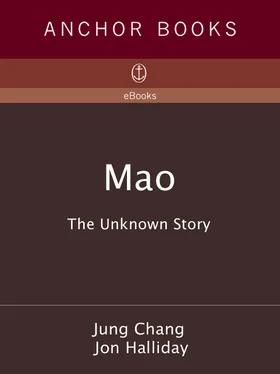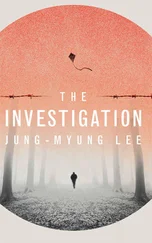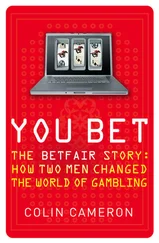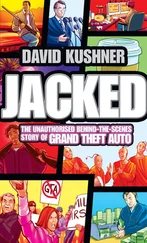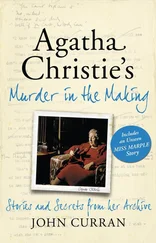JUNG CHANG, JON HALLIDAY
MAO: THE UNKNOWN STORY
CONTENTS
Cover
Other Books by This Author
About the Authors
Title Page
Copyright
List of Illustrations
List of Maps
List of Abbreviations in Text
Note about Spelling in Text
PART ONE —Lukewarm Believer
1 On the Cusp from Ancient to Modern (1893–1911; age 1–17)
2 Becoming a Communist (1911–20; age 17–26)
3 Lukewarm Believer (1920–25; age 26–31)
4 Rise and Demise in the Nationalist Party (1925–27; age 31–33)
PART TWO —Long March to Supremacy in the Party
5 Hijacking a Red Force and Taking Over Bandit Land (1927–28; age 33–34)
6 Subjugating the Red Army Supremo (1928–30; age 34–36)
7 Takeover Leads to Death of Second Wife (1927–30; age 33–36)
8 Bloody Purge Paves the Way for “Chairman Mao” (1929–31; age 35–37)
9 Mao and the First Red State (1931–34; age 37–40)
10 Troublemaker to Figurehead (1931–34; age 37–40)
11 How Mao Got onto the Long March (1933–34; age 39–40)
12 Long March I: Chiang Lets the Reds Go (1934; age 40)
13 Long March II: The Power behind the Throne (1934–35; age 40–41)
14 Long March III: Monopolizing the Moscow Connection (1935; age 41)
PART THREE —Building His Power Base
15 The Timely Death of Mao’s Host (1935–36; age 41–42)
16 Chiang Kai-shek Kidnapped (1935–36; age 41–42)
17 A National Player (1936; age 42–43)
18 New Image, New Life and New Wife (1937–38; age 43–44)
19 Red Mole Triggers China — Japan War (1937–38; age 43–44)
20 Fight Rivals and Chiang — Not Japan (1937–40; age 43–46)
21 Most Desired Scenario: Stalin Carves up China with Japan (1939–40; age 45–46)
22 Death Trap for His Own Men (1940–41; age 46–47)
23 Building a Power Base through Terror (1941–45; age 47–51)
24 Uncowed Opponent Poisoned (1941–45; age 47–51)
25 Supreme Party Leader at Last (1942–45; age 48–51)
PART FOUR —To Conquer China
26 “Revolutionary Opium War” (1937–45; age 43–51)
27 The Russians Are Coming! (1945–46; age 51–52)
28 Saved by Washington (1944–47; age 50–53)
29 Moles, Betrayals and Poor Leadership Doom Chiang (1945–49; age 51–55)
3 °China Conquered (1946–49; age 52–55)
31 Totalitarian State, Extravagant Lifestyle (1949–53; age 55–59)
PART FIVE —Chasing a Superpower Dream
32 Rivalry with Stalin (1947–49; age 53–55)
33 Two Tyrants Wrestle (1949–50; age 55–56)
34 Why Mao and Stalin Started the Korean War (1949–50; age 55–56)
35 Mao Milks the Korean War (1950–53; age 56–59)
36 Launching the Secret Superpower Program (1953–54; age 59–60)
37 War on Peasants (1953–56; age 59–62)
38 Undermining Khrushchev (1956–59; age 62–65)
39 Killing the “Hundred Flowers” (1957–58; age 63–64)
40 The Great Leap: “Half of China May Well Have to Die” (1958–61; age 64–67)
41 Defense Minister Peng’s Lonely Battle (1958–59; age 64–65)
42 The Tibetans Rebel (1950–61; age 56–67)
43 Maoism Goes Global (1959–64; age 65–70)
44 Ambushed by the President (1961–62; age 67–68)
45 The Bomb (1962–64; age 68–70)
46 A Time of Uncertainty and Setbacks (1962–65; age 68–71)
PART SIX —Unsweet Revenge
47 A Horse-trade Secures the Cultural Revolution (1965–66; age 71–72)
48 The Great Purge (1966–67; age 72–73)
49 Unsweet Revenge (1966–74; age 72–80)
50 The Chairman’s New Outfit (1967–70; age 73–76)
51 A War Scare (1969–71; age 75–77)
52 Falling Out with Lin Biao (1970–71; age 76–77)
53 Maoism Falls Flat on the World Stage (1966–70; age 72–76)
54 Nixon: The Red-baiter Baited (1970–73; age 76–79)
55 The Boss Denies Chou Cancer Treatment (1972–74; age 78–80)
56 Mme Mao in the Cultural Revolution (1966–75; age 72–81)
57 Enfeebled Mao Hedges His Bets (1973–76; age 79–82)
58 Last Days (1974–76; age 80–82)
Epilogue
Acknowledgments
List of Interviewees
Archives Consulted
Notes
Bibliography of Chinese-language Sources
Bibliography of Non-Chinese-language Sources
Photo Insert
1. The room where Mao was born.
2. Mao with his mother and younger brothers, 1919.
3. Mao, his father, uncle and brother, Tse-tan, 1919.
4. Yang Kai-hui, Mao’s second wife, with their two eldest sons, 1924.
5. Grigori Voitinsky.
6. Maring.
7. Mikhail Borodin with Chiang Kai-shek and Wang Ching-wei.
8. Mao on the day he first became “Chairman Mao,” 1931.
9. The first formal meeting of the Red state, 1931.
10. The bridge over the Dadu River at Luding.
11. Mao in Yenan in 1937, with participants in the “Autumn Harvest Uprising.” 12. Mao with Zhu De, Lin Biao and other Red Army officers, 1937.
13. Shao Li-tzu.
14. General Zhang Zhi-zhong.
15. General Hu Tsung-nan.
16. General Wei Li-huang.
17. Chiang Kai-shek with Chang Hsueh-liang, the “Young Marshal.” 18. Mao with Chang Kuo-tao, 1937.
19. Mao with Wang Ming.
20. The Politburo in Yenan, 1938.
21. Red Army troops entering Yenan, 1937.
22. Yenan: the Congress Hall and cave dwellings.
23. The Spanish Franciscan cathedral, Yenan.
24. Jung Chang outside Mao’s official residence in Yenan.
25. Jon Halliday in Yenan.
26. Mao’s secret hide-out outside Yenan.
27. Mao with his third wife, Gui-yuan, 1937.
28. Mao’s sons in Russia.
29. Mao in 1939, reading Stalin.
30. A receipt signed by Mao for money received from the Russians.
31. Mao with US ambassador Patrick Hurley, 1945.
32. Jiang Qing, Mao’s fourth wife, with General George C. Marshall, 1946.
33. Chiang Kai-shek visiting his ancestral temple for the last time, 1949.
34. Red troops entering Nanjing, 1949.
35. Mao proclaiming the founding of Communist China, 1 October 1949.
36 and 37. Mass executions in front of organized crowds.
38. Mao at Stalin’s 70th birthday, 1949.
39. Mao in a Russian cowshed.
40. Tiananmen Gate bedecked with a portrait of the dead Stalin, 1953.
41. Mao holding up a wreath to Stalin’s portrait.
42. Mao embracing Nikita Khrushchev, 1958.
43. Mao inspecting a jet fighter.
44. Mao with a gun at a military exercise.
45. Mao at a Japanese exhibition in Peking, 1956.
46. Mao’s bedroom.
47. Peasants in Henan during the Great Leap Forward.
48. A propaganda photograph.
49. A girl pulling a cart.
50 and 51. Liu Shao-chi visiting his home village during the famine, 1961.
52. Mao swimming.
53. Mao contemplating a map of the world.
54. The Panchen Lama being denounced.
55. Peng De-huai.
56. Peng De-huai being paraded during the Cultural Revolution.
57. Liu Shao-chi being struck inside the leaders’ compound.
58. Liu being trampled.
59. Liu’s wife, Wang Guang-mei, being manhandled.
60. The “jet-plane” position.
61. Brutal hair-cutting.
62. A rare picture of how the Chinese population really looked.
63, 64 and 65. Dissidents being shot outside Harbin.
66. Mao and Lin Biao on Tiananmen Gate, 1966.
67. Lin Biao, Mao, Prince Sihanouk and Princess Monique, 1971.
Читать дальше
